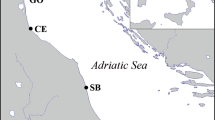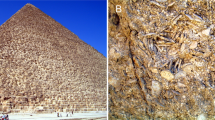Abstract
IN September 1932 the New Brighton (Wallasey) Corporation began an excavation of the sandy foreshore near high-water mark, which was completed and filled with sea-water in May 1933 to form an artificial marine lake. Water is retained in the lake by a sea-wall, which is, however, covered on good spring tides (that is, 29 ft. or more), when the water in the lake is refreshed and partially renewed. The bottom of the lake was originally sand, but had acquired a considerable deposit of mud by february 1935, when the water was run out for removal of encroaching blown sand. At this time, the cockle, Cardium edule, was found in considerable numbers (33–459 per sq. metre), as determined by M. Davies, E. Norman, G. E. Williams, P. E. Travis, K. C. Fulton and one of us (J.H.O.) in the sand and mud in the exposed bed, the cockles having entered the lake after the final filling on May 9, 1933.
This is a preview of subscription content, access via your institution
Access options
Subscribe to this journal
Receive 51 print issues and online access
$199.00 per year
only $3.90 per issue
Buy this article
- Purchase on Springer Link
- Instant access to full article PDF
Prices may be subject to local taxes which are calculated during checkout
Similar content being viewed by others
References
J. H. Orton, Mar. Biol. Assoc., 14, 251 (1926).
J. H. Orton, Superintendent's Report, Lanes. and Western S.F.C., March, 1935.
J. H. Orton, James Johnstone Memorial Volume, Liverpool, p. 97, 1934.
Author information
Authors and Affiliations
Rights and permissions
About this article
Cite this article
BUNTING, L., ESLICK, A., JONES, J. et al. Rate of Growth of Cardium edule. Nature 137, 705–706 (1936). https://doi.org/10.1038/137705a0
Issue Date:
DOI: https://doi.org/10.1038/137705a0
This article is cited by
-
Rate of Growth of Totally Submerged Cardium edule
Nature (1937)
Comments
By submitting a comment you agree to abide by our Terms and Community Guidelines. If you find something abusive or that does not comply with our terms or guidelines please flag it as inappropriate.



